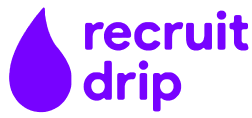Rise of "quiet quitting"
Research and data show that "quiet quitting" is becoming more common in today's workforce. Based on a study done by the Work Institute, 41% of people quit their jobs in 2020 without giving any official notice. This shows a big change in how employees act, as people are now more likely to look for other jobs quietly instead of following the usual way to quit their jobs.
Influencers of Quiet Quitting
There are many reasons for the rise of "quiet quitting." First, it's easy for employees to find information about jobs online and through professional networks. This makes it easy for them to look for new chances without telling anyone. They can update their resumes, get in touch with recruiters, and apply for new jobs without their present employers knowing.
The changing nature of work has also strengthened the "quiet quitting" trend. Remote work, flexible scheduling, and the gig economy have made it easier for employees to move into new jobs without too much disruption to their personal lives or finances. So, people feel more freedom to try different job paths without quitting formally.
What does this mean for the hiring business?
Quiet Quitting offers recruiters with both problems and chances. On the one hand, it makes it harder to find disengaged workers and possible candidates because the usual signs of quitting might be elsewhere. On the other hand, it gives proactive recruiters a chance to use effective methods to bring in top talent.
Getting used to a quiet quit
Recruiters can keep up with the changing nature of the job market by doing the following:
1. Strengthen internal engagement: Creating a good work setting and getting people involved can help stop people from leaving quietly. Employees can be encouraged to stay and do their best work by giving them regular comments, praise, and chances to grow.2. Use Data Analytics: Recruiters can find trends and signs of disengagement by looking at employee data. Things like less work getting done, more absences, or not taking part in company projects can be red flags that make recruiters want to take action.
3. Use recruitment automation software. Software that simplifies the hiring process by automating repetitive tasks, making it easier for candidates to get involved, and giving you useful insights. These sites can help recruiters find passive candidates, keep in touch with them, and keep an eye on what they are doing without being seen.
4. Implement applicant tracking systems (ATS). An ATS like Recruitdrip.com can track contacts with candidates, handle applications, and make hiring more efficient. ATS features allow recruiters to keep an eye on how candidates act, track how engaged they are, and study application data. This gives them a proactive way to find talent.
5. Adopt proactive methods of finding candidates. Recruiters can find and talk to possible candidates through social media, professional networks, and industry events, among other places. Recruiters can stay in touch with inactive candidates who may be looking for new jobs in the background by building relationships and keeping lines of communication open.
The rise of "quiet quitting" has given the recruitment business new challenges and opportunities. Recruiters can adapt well to the changing environment if they know what's causing this trend and use proactive tactics. Recruitment automation tools and applicant tracking systems like Recruitdrip are very important in helping recruiters deal with these changes. In this age of "quiet quitting," recruiters can find top talent, find employees who aren't involved, and improve the whole recruitment process by using technology and data-driven methods.


